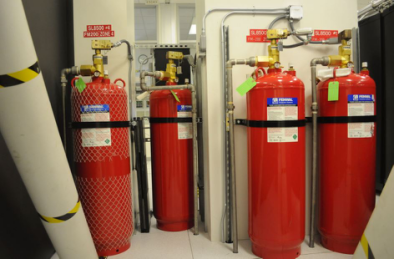A catastrophic event such as a fire can lead to property destruction, as well as loss of life. Today, every commercial building is required to have fire safety tools such as a fire and CO2 alarm, fire extinguisher, fire blankets and a safety plan. Fire drills should be conducted every now and then, not just to educate the staff but also to test the systems.
Fire safety is more than stop, drop and roll. The most important part of fire safety is the evacuation plan, which every employee must be familiar with, so they can make a quick exit from the building.
In general, the total number of fires reported by the National Fire Incident Database (NFID) in the past five years total to 439,256. Amongst these, 17,507 account for structural fires in residential, as well as commercial areas.
Fire Suppression System and Fire Blanket


Businesses, especially restaurants must have fire suppression systems on all building levels. Where a fire blanket helps contain a fire by stopping the supply of oxygen to the flames, a fire suppression system helps stop the spread of fire. A fire blanket can withstand heat ranging from 900° to 1650°.
On the other hand, a fire suppression system senses the change in the temperature and then releases fire-extinguishing chemicals in the areas that are most likely to light up. Regular fire safety inspections and maintenance must be done on all the systems to make sure they are working properly.
Fire Safety Tips
Fire Prevention

- Make sure your work area is clear of waste paper and other trash items that can catch fire easily
- Check all the electrical cords laid out in the open near you. If any of them are damaged, cover them with a fire sleeve until the electrician arrives. In the meantime, do not step on the wires or their protective coating might further deteriorate and cause a fire
- Don’t overload the circuits
- When you leave the office, make sure all the electrical appliances are off
- Do not place heat producing equipment in near proximity of anything that can catch fire.
In the Case of an Actual Fire

- Call 911 immediately when you see a fire blazing and do not hang up until you are advised to do so by the emergency responder
- When exiting rooms that are on fire, make sure to close the door behind you. This will stop the fire from spreading and give you a head start to exit the building safely
- Do not use elevators when the evacuation plan is in place
- Do not deviate from the escape plan that was taught during the evacuation drill. Once you have reached outside at the pre-determined place according to the plan, do a headcount
The only way to ensure yours and your staff’s safety is through a safety and evacuation plan. By conducting regular drills and making sure that every staff member of the building is aware of where the emergency exit, all lives can be saved.

